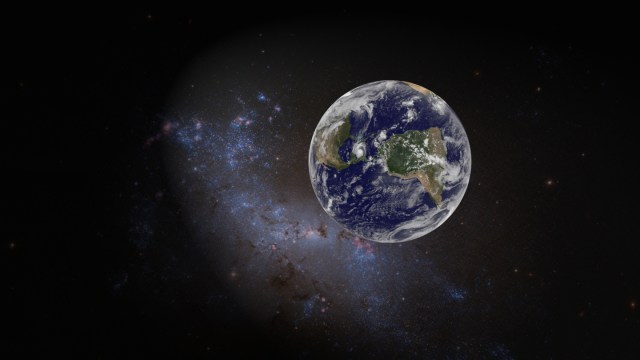Elon Musk just secured $507 million in funding to pursue these 3 SpaceX projects

Elon Musk once asked a venture capitalist who was about to invest in SpaceX if she was ready “to not see a return for 15 years?”
“Of course,” she replied.
This kind of optimistic outlook is hard to come by in the venture capital world, but it seems to be shared by investors worldwide when it comes to SpaceX.
“SpaceX is one of [the most], if not the most, popular pre-IPO tech companies globally,” Robert Hilmer, global head of business development at private market analysis group Equidate, told CNBC. “There is an unlimited amount of funding that the company could probably access globally in private markets.”
Case in point: SpaceX recently secured about $507 million in new funding after issuing 3 million new shares, according to The Information, a publication that covers the technology industry. The new report estimates SpaceX to be valued at $27.5 billion.
What’s SpaceX going to do with all that cash? According to recent statements from Musk and SpaceX President and COO Gwynne Shotwell, the company intends to put the funding toward three ambitious projects.
Starlink
SpaceX’s Starlink project hopes to provide everyone on the planet with access to internet connection–a really, really fast internet connection.
In March, the Federal Communications Commission approved plans for the company to launch 12,000 satellites into orbit that would provide international internet service at, if all goes as planned, a speed of 1 gigabyte per second–about 178 times the current worldwide average.
First two Starlink demo satellites, called Tintin A & B, deployed and communicating to Earth stations pic.twitter.com/TfI53wHEtz
— Elon Musk (@elonmusk) February 22, 2018
Internet-providing satellites have been around for years. However, they’re typically expensive and provide slower service than land-based internet infrastructure. This is mainly because it takes a relatively long time for a signal signal to travel from the satellite to the host. Musk hopes to solve this problem by putting his satellites in much lower orbit than usual–just hundreds of miles up as opposed to the typical 22,000 miles–in order to reduce the “latency,” or time it takes for the signal to travel.
But the problem with this low-orbit solution is that it reduces the amount of surface area to which each satellite is able to provide service. That means SpaceX will need lots of satellites if it wants to cover the globe. To accomplish this, SpaceX plans to put 800 satellites into low Earth orbit, between 684 and 823 miles in the air, to provide U.S. and international coverage, and then launch thousands more into “Very Low Earth Orbit,” about 211 miles up, to cover whatever the first round of satellites missed.
The BFR
SpaceX has been working on several broad classes of rockets and spacecraft since it was founded in 2002. But, eventually, the company wants to consolidate all of its engineering efforts into one system.
“We want to have one system, one booster and ship, that replaces Falcon 9, Falcon Heavy, and Dragon,” Musk said in September. “If we can do that, then all the resources that are used for Falcon 9, Heavy, and Dragon can be applied to this system.”
BFR (Photo: SpaceX)
That amalgam of a system is the BFR–the “Big Falcon Rocket,” or, as Musk likes to call it, the Big Fucking Rocket. The BFR is set to be a 348-foot-tall reusable rocket that runs on liquid methane and oxygen, and it’s intended to carry up to 100 people and 150 tons of payload. It’s scheduled to travel unmanned to Mars in 2022.
In 2017, SpaceX secured a lease for an 18-acre site in the Port of Los Angeles, where it intends to build the BFR. After it is constructed, the company plans to ship the rocket by boat, by way of the Panama Canal, to Brownsville, Texas, where it will be transported by truck to a SpaceX launch site in McGregor, Texas, some 400 miles from the coast.
World’s Fastest International Transportation System
SpaceX has other, more local plans for its BFR. The company wants to use the system to create an ultra high-speed transportation system that could take people to any destination on Earth in under an hour.
“If we’re building this thing to go to the moon and Mars, then why not go to other places on Earth as well?” Musk has said.
According to the company, the rocket system would fly at speeds around 4.6 miles per second–12 times faster than the now-retired Concorde jet. At that rate, you could travel from London to New York in 29 minutes, Bangkok to Dubai in 27 minutes, and Los Angeles to New York in 25 minutes.
“This would not be for the faint of heart, and it is difficult to see how this would be inexpensive,” Leroy Chiao, a former NASA astronaut, told Business Insider. “But the one thing I’ve learned from observing Elon is not to count him out.”
Shotwell spoke about the transoceanic travel technology at a recent TED event.
“I’m personally invested in this one because I travel a lot, and I do not love to travel,” she said. “And I would love to get to see my customers in Riyadh, leave in the morning and be back in time to make dinner.”
She said the BFR will be operational “within a decade, for sure.”





